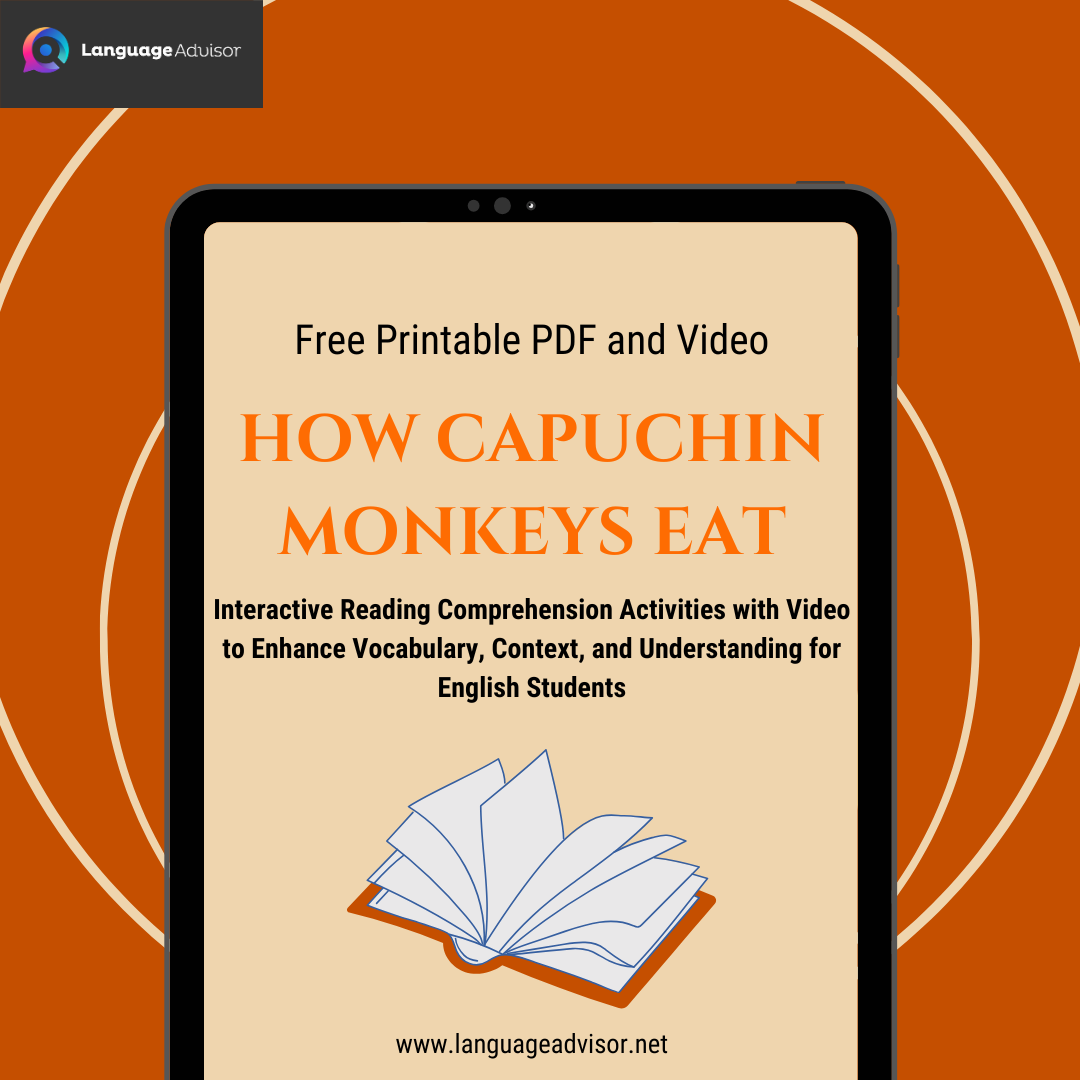How Capuchin monkeys eat. Interactive Reading Comprehension Activities with Video to Enhance Vocabulary, Context, and Understanding for English Students. Free Printable PDF
How Capuchin monkeys eat

Improving reading comprehension is a vital skill for English learners at all levels. It goes beyond just understanding the words on the page, but also involves grasping meaning, context, and intent behind a text. One effective way to enhance reading comprehension is by integrating videos alongside written exercises. Video content can provide visual cues, context, and engagement that help reinforce the learning process. In this blog post, we’ll explore a fun and interactive reading comprehension activity that combines written passages with video resources to deepen understanding and make learning more enjoyable.

How Capuchin monkeys eat – Reading Comprehension

In the hardest times there’s still a rich source of food for Brazil’s Capuchin monkeys: palm nuts.
One problem, you have to break through the tough outer shell. Young monkeys know the principles, but haven’t quite mastered the technique.
Frustration sets in and leads to a painful mistake! Young monkeys learn from their mistakes and watch the older males at work.
First lesson: test the rock to see if it’s strong enough for the job. Not this one!
Capuchins can walk upright, and that’s important! It frees up the hands to carry the stones. Some rocks weigh more than 1/4th of the Capuchin’s body weight. It may take more than 10 attempts to crack the nut.
Success is not only a matter of intelligence. The larger the monkey, the heavier the stone it can lift, so older males have a real advantage. Success at last!
Watch the video
- What type of monkeys are mentioned?
- What country do they live in?
- What do they eat?
- Why are they difficult to eat?
- How do they eat the food?
- Why is it useful to walk upright?
- How much can the stones weigh?
- Which group of monkeys can lift the heaviest stones?

Using video in reading comprehension activities not only enhances students’ engagement but also aids in building critical language skills such as listening, vocabulary development, and contextual understanding. By incorporating multimedia into traditional reading lessons, teachers can cater to various learning styles and keep students motivated. We encourage you to try out this method and observe how it transforms reading into a more dynamic, interactive experience for your English learners.

DOWNLOAD THE PDF FOR FREE






